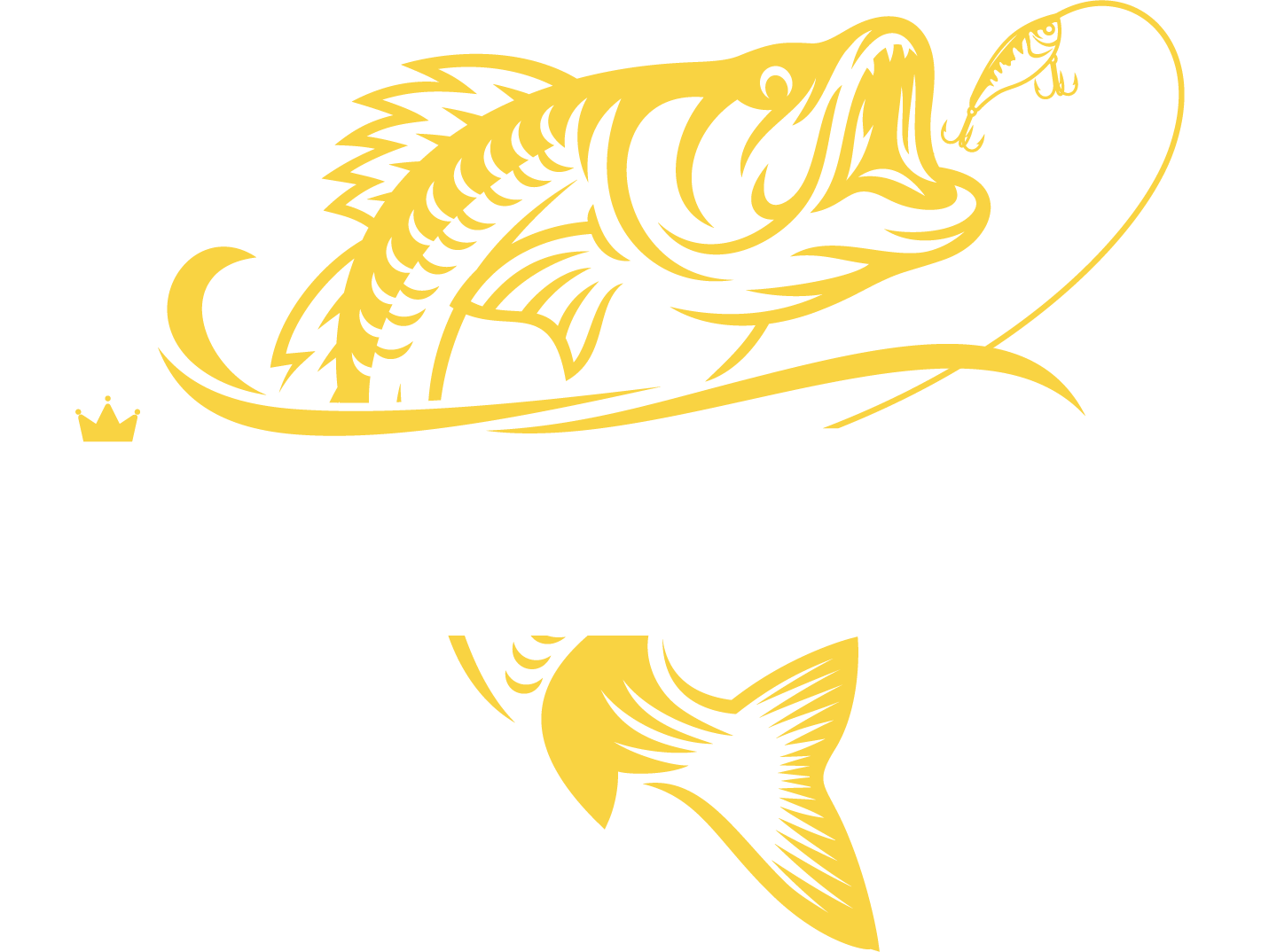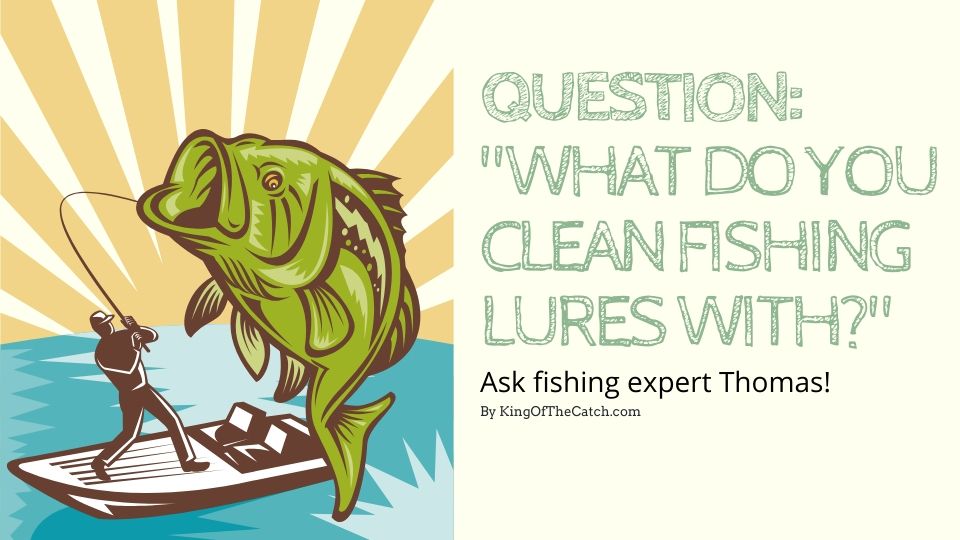Are you about to go fishing to the nearest water body? Is your tackle box geared up with clean and polished fishing lures? When it really comes to any type of lures or the type of fish you are hunting for, it is important to always use clean and neat lures. You can’t expect to catch a fat catch when you have a dirty and grimy lure.
It really doesn’t matter; if you are catching a freshwater fish or a saltwater fish, it is crucial to fish with a properly cleaned lure. As a fishing devotee, I always clean my fishing lures and keep them ever-ready for use the next day. We should do the due diligence of cleaning them up after the everyday-catch.
I have learned over the years that improper or inconsistent cleaning of your fishing lures tends to damage the lures to the point of no return.
What Do You Clean Fishing Lures With?
Question: Hi, I am Leslie, 39 from Vancouver, Canada, and I have an important question, Thomas. My husband and I are fishing enthusiasts, and we go fishing every now and then. I wanted to ask if you could kindly impart some knowledge on how to clean fishing lures in the right way. Could you guide me through the process?
Answer: Hi there, Leslie. Thomas here and thank you for your message. This is a common question that comes around every now and then in the fishing community. But it is extremely important to understand the importance of cleaning your lures and how it will benefit you in return.
A lot of fishermen tend to treat their lures as a disposable item. They will use it a couple of times and dispose of it. But fishing lures can be used for an extended period of time if they are properly cleaned up and maintained. Water will affect the lures, but saltwater does the most damage to them.
They will surely become unusable over time if they are not taken care of. You can extend the life of your lures now by always cleaning away the saltwater remainder and by keeping them dry.
The steps listed down below to prolong the life of your lures now
Step 1
This step is crucial when you are on a fishing trip. You have to use fresh water for washing away the saltwater as you fish. You have to be responsible for removing the lure from the saltwater and dunk it or wash it with some freshwater during the trip.
It is done to minimize the damage inflicted by the saltwater. Then you can grab hold of some paper towel to clean and dry it off. As a fisherman, you should always take the necessary step of taking care of your lures on a trip.
Step 2
Separately storing wet lures is incredibly important. Freshwater, in comparison to saltwater, will do very little damage to your tackle box. However, there is no excuse for storing your wet lures with the rest of the gear in the tackle box.
You should always store them separately on your way back home from the trip. Lures that have been used in the saltwater shouldn’t go back inside the tackle box until they are dried.
Step 3
Now, you have to do this step when you get back home. You will require a toothbrush and a gentle soap to do this. You will use both of these items to wash and clean the lure. Usual hand soap or an all-purpose soap will do the trick.
You will need to wet your toothbrush and apply the cleaner within the areas that are hard to reach. You have to be careful when you clean these spots, so you don’t damage the lure during the process. The lures are delicate and can easily break off if you are not careful.
You can purchase the Amazon #1 Best Seller Sierra Dawn Campsuds to clean the lure. This all-purpose soap is lightweight, convenient, and quite portable. It is built for heavy-duty cleaning.
Step 4
The last step is quite simple. You will need a dry towel for wiping the lure. You can utilize the towel for drying all the spots that are hard to reach within the lure. Make sure to get all the areas of the lure properly cleaned. After that, you can store the lure back into the tackle box.
There are a ton of tacklebox available in the market today. However, the Plano Tackle Systems Hybrid Hip 3 Stowaway Box 3113701 is an excellent choice for your lures. It will be convenient for you as it comes with a really big storage area and has three brass-bailed latches that are built for heavy-duty. It is created using components that are of the highest quality.
The remaining steps mentioned below are meant for advanced maintenance. These steps are very crucial and necessary to protect and maintain your lures.
Step 5
You have to fill up a container with a combination of vinegar and salt. You have to insert the rusty hooks of your lure in the solution you made and allow them to stay there for at least 12 hours. You can scrub the remaining rust away with steel wool after you remove it from the solution.
Now you should soak a rag in denatured alcohol. You have to use the rag to wipe the lure down so as to prevent the forming of the rust again. The solution should consist of a 1-cup of salt for every vinegar gallon that you utilize.
Step 6
Hooks aren’t naturally sturdy, and they can get extremely corroded over time. Rusting compromises the hook’s integrity. Removal and replacement of the hook are important at this point. You can remove the rusted hook with the help of an O-ring plier.
You have to replace the corroded hook with another of the same size and weight. It is necessary to avoid any kind of future impact on the lure. You can always find the right hook match for your lure online. If you are having trouble finding the right match, then you can easily look it up.
Step 7
You have to store the feathered lures in an airtight bag. Some lures come with feathers, and they should be stored in that way to prevent damaging the item. Feathers are needed to protect the lures from the bugs that try to eat it. You should always keep them in their packaging and only take it out during times of use.
Step 8
Tail dips should be applied to the soft plastic lures. When there are signs of damage to the soft plastic lures, you can frequently utilize tail dips for recoloring and bringing it back to life. Most fishermen tend to experiment with several paint colors to study what draws the fish.
The tail dips are the paints that are designed particularly for plastic fishing lures. The lure can also be dipped directly in the paint, and you can do it often. You can also spray and drop on top of the lure during other times.
Step 9
Another hack to maintain your lures would be to use sandpapers. If any of your lures get scratched, then you can use sandpaper to sand down and fine-tune your lures. It will smooth out the scratches. You can also use lacquer or enamel for covering it up. You can utilize a small paintbrush as well as some paint for filling up the paint job.
You can buy the 3M 9016 General Purpose Sandpaper Sheets 3-2/3-Inch by 9-Inch, Medium Grit for sanding, and fine-tuning your lure. It is a 6PK MED ALO Sandpaper and is very easy to utilize. You can use it for sands, paint, metal, and wood as well. You can avoid the trouble of skipping in sanding now.
A Heads Up!
You have to be extra careful with old lures that have been painted. You need a light touch and mild cleaning to maintain the original details and finish of the eyes and scales. You should definitely be cautious when you are handling the lure. Some rusty parts of the lure can cause abrasions and cuts when you are handling the lures. You also have to be careful with cleaners.
Keep these tips in mind Leslie and you and your husband will have an amazing and well-maintained lure collection!
Thomas

Niels Thomas is a wildlife expert and fishing fanatic that works with major fishing brands like Deeper Sonar, Abu Garcia, Berkley, PENN, BassPro and Pure Fishing. Through sharing the best fishing tips, tricks, gear reviews, locations and much more he hopes to inspire fishing fanatics to start their own journey towards becoming the King of the Catch!

